How Much Does Wedding Photography Cost?
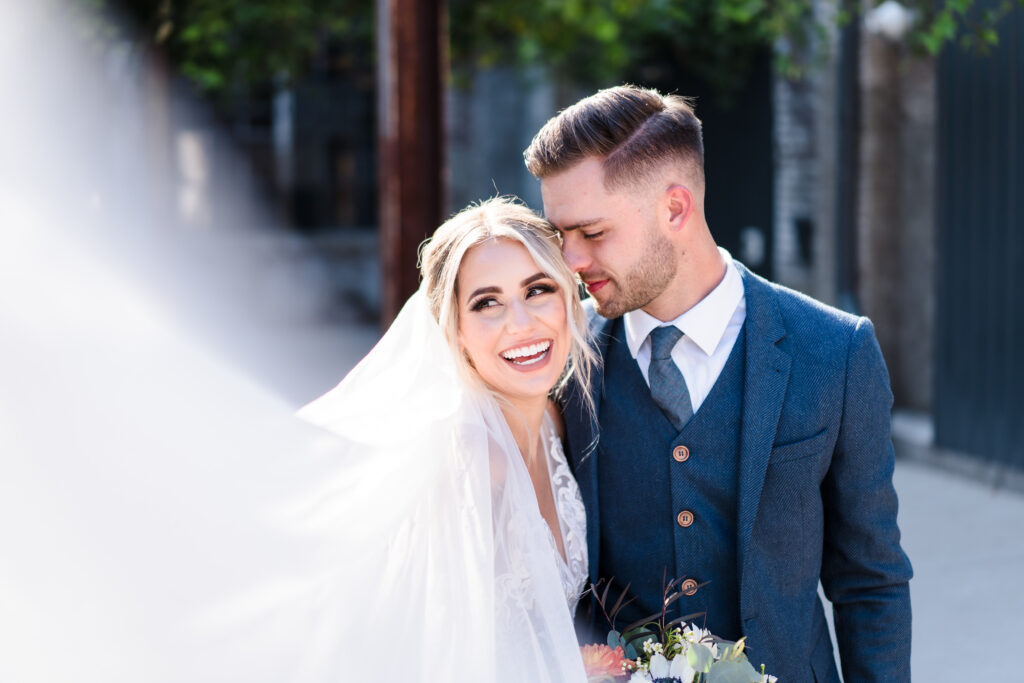
As any newly-married couple can attest, the process of selecting the right wedding vendors can be overwhelming. Not only are there a haunting array of options, but prices vary drastically between different vendors. This is especially true of wedding photographers. Many photographers choose not to publish pricing information on their websites, and some require you to provide them with detailed information about your wedding plans before they’ll reveal starting prices for their wedding packages. Once you do determine pricing, it can be even more frustrating to try to decipher why one photographer is so much more expensive than another when they seem to be offering similar services.
So how much does wedding photography cost? Why is it so expensive? And what is a fair price to pay for photography services for your wedding?
Wedding Photography Investment Range

To begin, it’s important to acknowledge that pricing for wedding photography, like pricing for most goods and services, depends on the competitiveness of the local market. Wedding photographers in New York City, for example, charge significantly more than photographers here in Columbus, Ohio. In major Midwestern cities like Columbus, Cincinnati, or Cleveland, costs range from as low as $1000 to over $10,000. This is obviously a large range in costs, and the question remains as to why some photographers are so much more expensive than others.

As we’ll explore throughout this article, there are several factors that impact wedding photography costs:
- What do you want included in your wedding package?
- What kind of equipment does the photographer utilize?
- What stye of photography are you looking for?
The answers to each of these questions determines the time it takes the photographer to provide the desired services, the skill and artistry required to actually achieve the look you’re going for, and the hard costs incurred by the photographer, all of which impact the total investment you’ll make.
What Is Included In Your Ideal Wedding Photography Package?
When asked how much they charge for their services, most wedding photographers will respond with a series of questions of their own. Have you selected a venue? How large is the wedding party? What time does your ceremony start and what time does the reception end? Are you drawn to a wedding album?
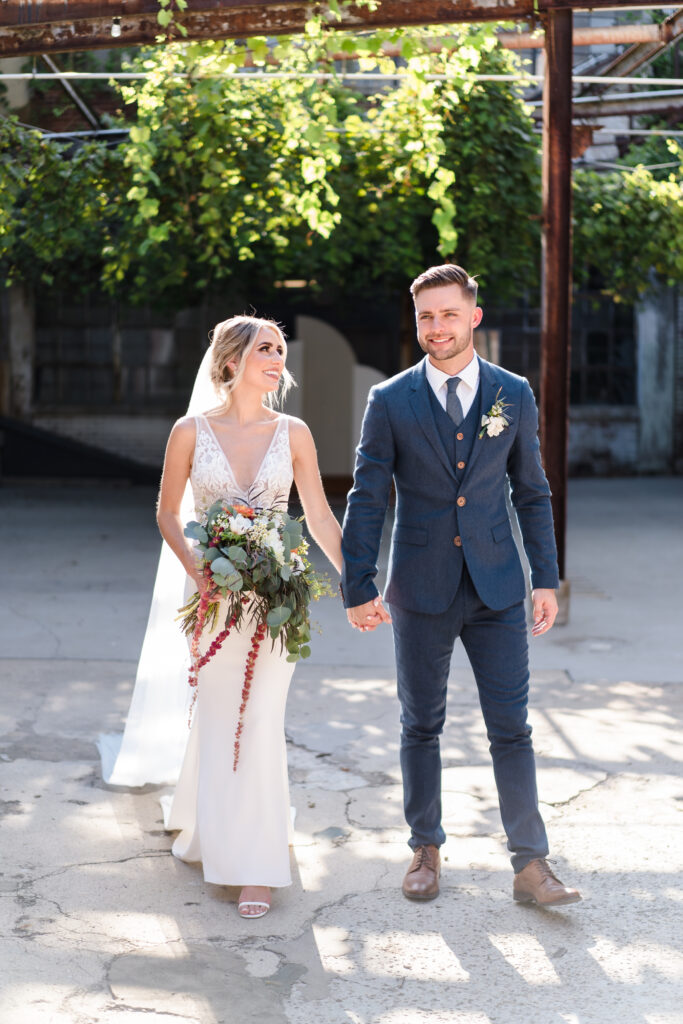
2nd Photographer
In spite of the seeming randomness of these questions, each impacts the final cost of the package put together for you. Certain venues, for example, are more difficult to photograph and might require a second photographer and / or lighting assistant to ensure the lead photographer can deliver images that meet their standard of quality. In the picture below, the lead photographer was at the front of the venue (the Ohio Statehouse) capturing the wedding party as they made their way through the Rotunda. The bride, meanwhile, waited on the landing at the top of the opposite stairs for her grand entrance. As she stood there watching the people she loves most in the world join together to celebrate one of the most significant days of her life, she was overcome with emotion. Without a second photographer, this moment would have remained only in her memory; as it happened, however, the second shooter was able to capture the moment for her.

The same goes for large wedding parties. Wedding timelines are typically rather condensed, and it takes time to pose all those people. If there’s only one photographer capturing everything, they are forced to choose between rushing several different poses or sticking with the standard shots to keep things on pace. With two shooters, one photographer can take one group (the bride with her bridesmaids, for example) while the other photographer takes a different group (in this case, the groom with his groomsmen). This way, you double the effective amount of time you have to capture the images you want.

A second shooter is an expensive addition to a wedding collection. We will discuss the cost of equipment later on, but suffice it to say that the combination of these hard costs and the skills required to be an effective second shooter means couples will end up paying roughly $75-$150 per hour more for each additional photographer included in the wedding package.
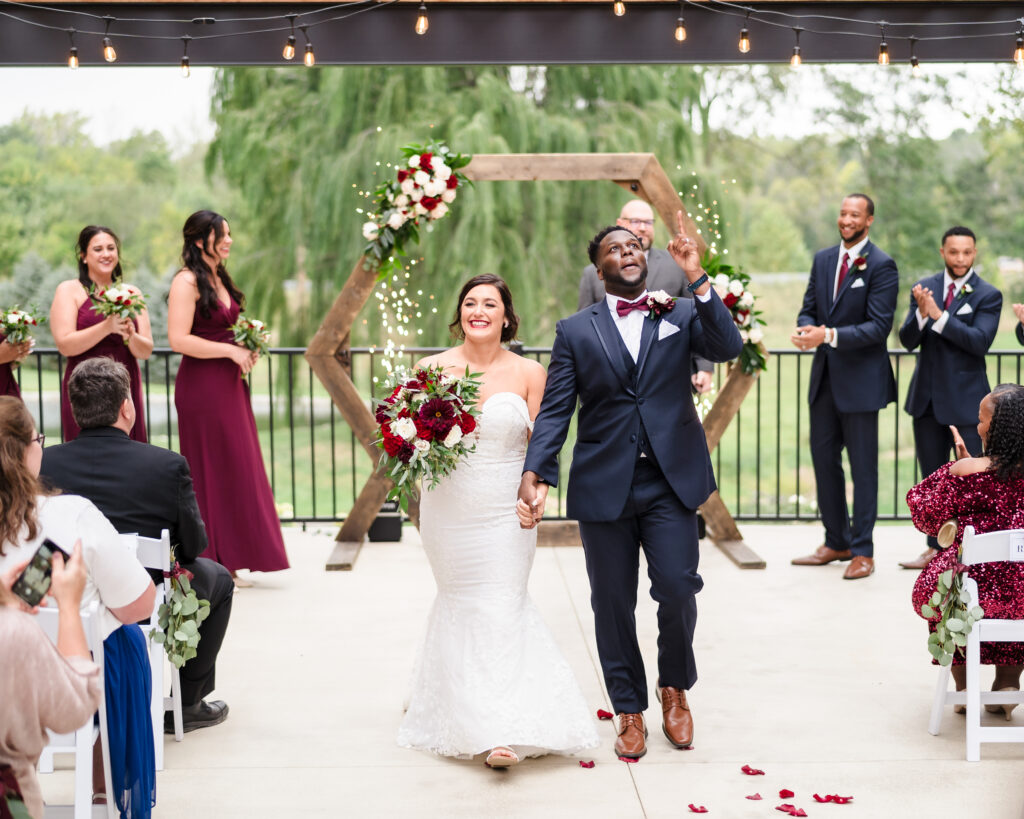
Amount of Coverage
It’s a similar story regarding the number of hours of photography coverage you want included in your wedding package. While prices vary, couples can expect established photographers to charge at least $300 for each additional hour of desired coverage. Despite how it might appear on the surface, this does not mean photographers are earning $300 per hour for their services. Rather, each additional hour of coverage results in a photographer taking several hundred additional images. These images need to be processed, edited, backed up, and delivered, adding significantly to the amount of work required on the back end.
Engagement Sessions
The same is true for engagement sessions. Most engagement sessions last for only an hour or so, but between planning, commuting, shooting, editing, and backup and delivery, this one hour session adds at least 5 hours of work for the photographer. While many photographers don’t quote the specific cost of the engagement session, the true market value is upwards of $450.

Wedding Albums
Arguably the most expensive addition to a wedding package is the wedding album. Many photographers (myself included) believe strongly that wedding photography is a form of art best appreciated through a print medium, and albums are one of the best ways to preserve these precious memories not only for your own enjoyment but also as an heirloom to pass down through the generations. However, professional wedding albums cost anywhere between $500 to several thousand dollars. Why so expensive?
The truth is you’re paying for several different things here. First, album creation requires a significant amount of time. After editing the photos individually, the photographer then has to go back through the gallery to select the images that best tell the story of the wedding day. Once the photos are selected, they have to be cropped and arranged in an artful, narrative manner. In addition to the time component, there are also substantial costs associated with album production. Most photographers utilize specialized software in the creation of their albums, software that has to be purchased each year. More significantly, high quality wedding albums are printed on archival paper utilizing specialized inks and printers to ensure they last for generations. Some clients go a step further by personalizing their albums with cover materials like leather, metal, wood, etc. which further add to the cost.

The Cost of Wedding Photography Equipment
Before we delve into the cost of professional photography equipment, it’s important to start by clarifying that great gear does not make someone a great photographer. An experienced photographer who can visualize and control light, purposefully compose the scene, and capture natural expressions and interactions will create more consistently beautiful images, even with cheap equipment, than a novice using the most expensive gear. However, wedding photography is a demanding field that asks photographers to adapt to changing conditions and moving subjects while still creating high end images. In the end, then, while expensive gear doesn’t make the image great, it goes a long way towards enabling the photographer to capture the image in an artful manner.
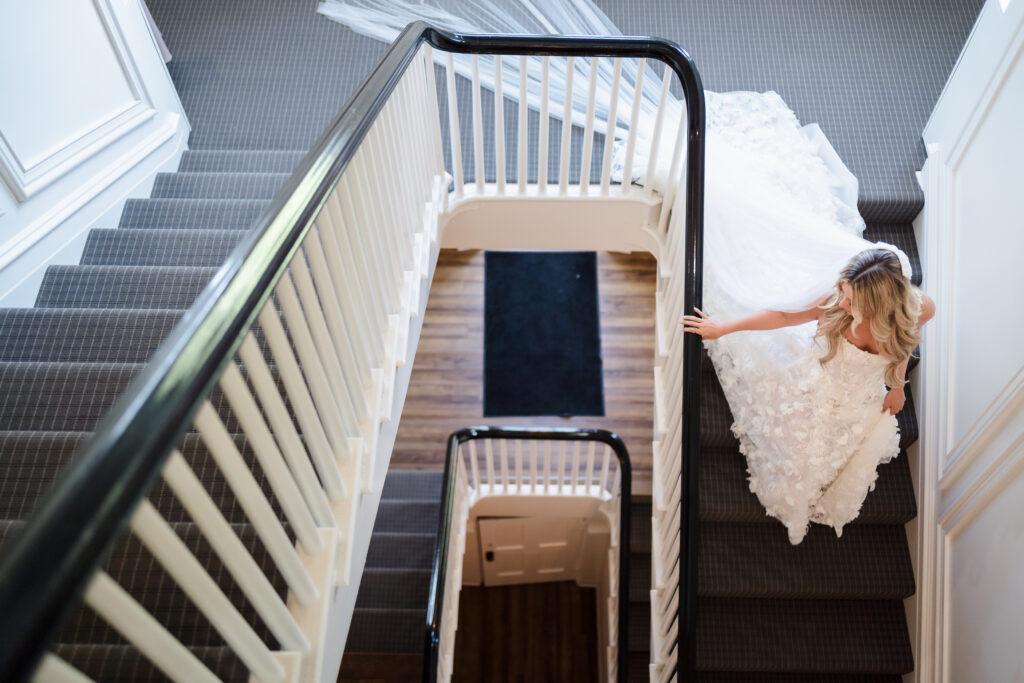
Backup Equipment and Data Redundancy
While there is no such thing as the “right” or “best” equipment, there are a few items that couples should ensure their photographers have. First, determine whether their camera(s) have dual memory card slots. Most of us have had the experience of a hard drive or some other form of digital storage failing on us at some point. The same happens with memory cards. Since weddings are once in a lifetime events, these are moments you can’t simply recreate. As a result, if the camera has one memory card and that memory card fails, all of those memories are lost. By utilizing a camera with dual memory card slots, the photographer can create an instant backup of your images, ensuring that your images are safe even if one of the cards fail.
What happens, though, if the photographer’s camera breaks midway through the ceremony? All the memory cards in the world aren’t going to help you then! This is why you should also clarify whether the photographer carries a second camera (it too should have dual memory card slots) to all of their weddings. There are other benefits to a photographer carrying two camera bodies with them throughout the wedding, but the most important is the security of knowing they have the equipment necessary to do the job they were hired to do even in the face of catastrophe.

These requirements add significantly to the startup costs of becoming a wedding photographer. Although it’s possible to purchase a high-quality camera capable of taking professional-level images for roughly $500, it’s difficult to find a camera with dual memory card slots for less than $1,200. In fact, most “professional” cameras cost anywhere between $2,500 and $6,000.
Advantages of Full Frame Cameras
This is partly because most professional wedding photographers purchase “full frame” cameras. Without getting too technical, different cameras have different sensor sizes, and full frame cameras offer some of the largest sensors available. In general, cameras with larger sensors tend to be more expensive than those with smaller sensors. The advantage of a camera with a larger sensor is twofold: it tends to perform better in low light environments and it makes it easier to achieve better subject separation and background blur. Let’s address why these characteristics matter individually below.
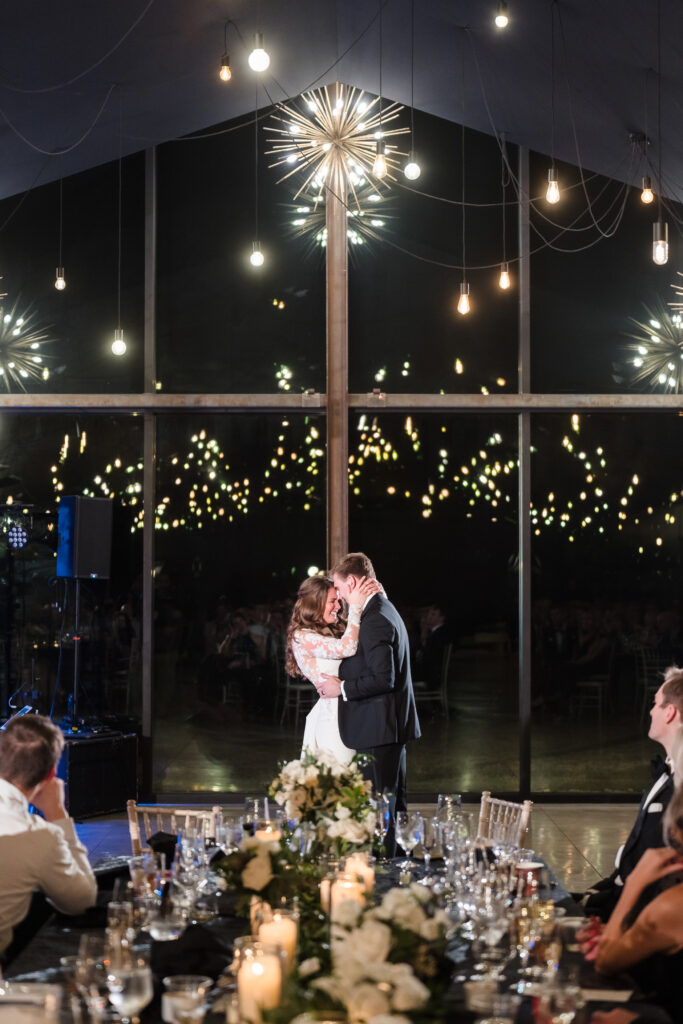
Better low light performance: Have you ever noticed that your smartphone takes beautiful pictures outdoors, but when you look at pictures taken inside, they lack detail and appear muddied? This is because the small sensor size of the camera in your phone limits the amount of light the camera can gather. To compensate for this, the phone has to do a ton of digital processing to the image which degrades the quality. With a full frame sensor gathering significantly more light, the camera has to do less digital processing, resulting in cleaner, more vibrant images. This is especially important in wedding photography because places of worship and reception spaces are often dimly lit, placing greater strain on the photographer’s equipment.
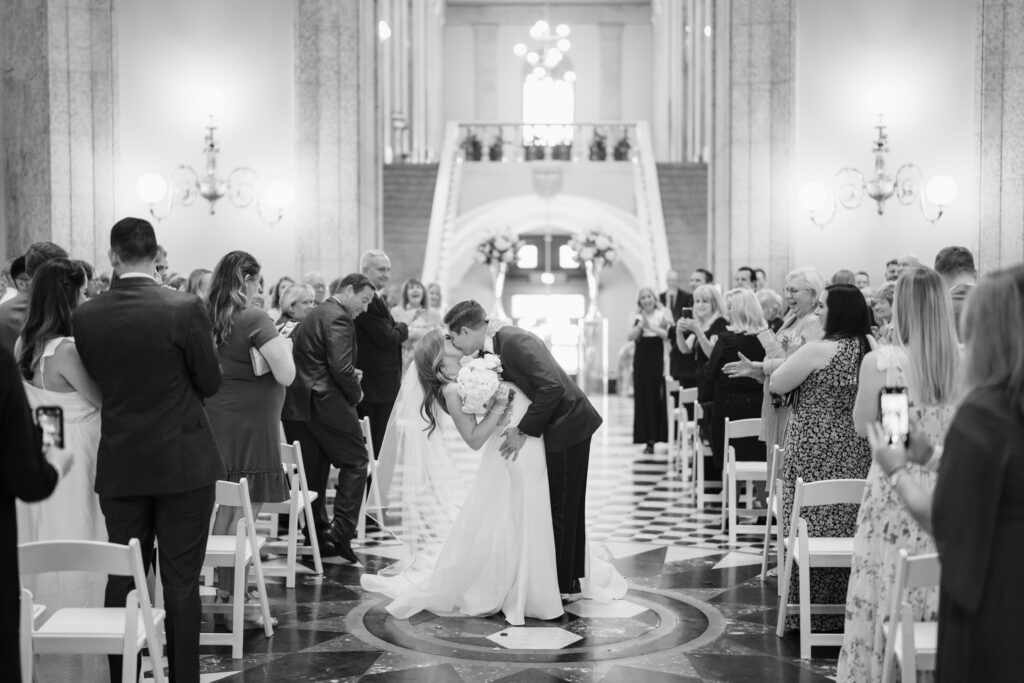
Better subject separation: One of the most desired effects in photography is known as a shallow depth of field where the subject is perfectly in focus but the background melts away into blurry oblivion. This helps to draw the viewer’s attention to the subject and allows the photographer to avoid background elements from distracting from an otherwise beautiful image. All else being equal, cameras with larger sensors can achieve better subject separation (shallower depth of field), giving the photographer more creative control over the image.
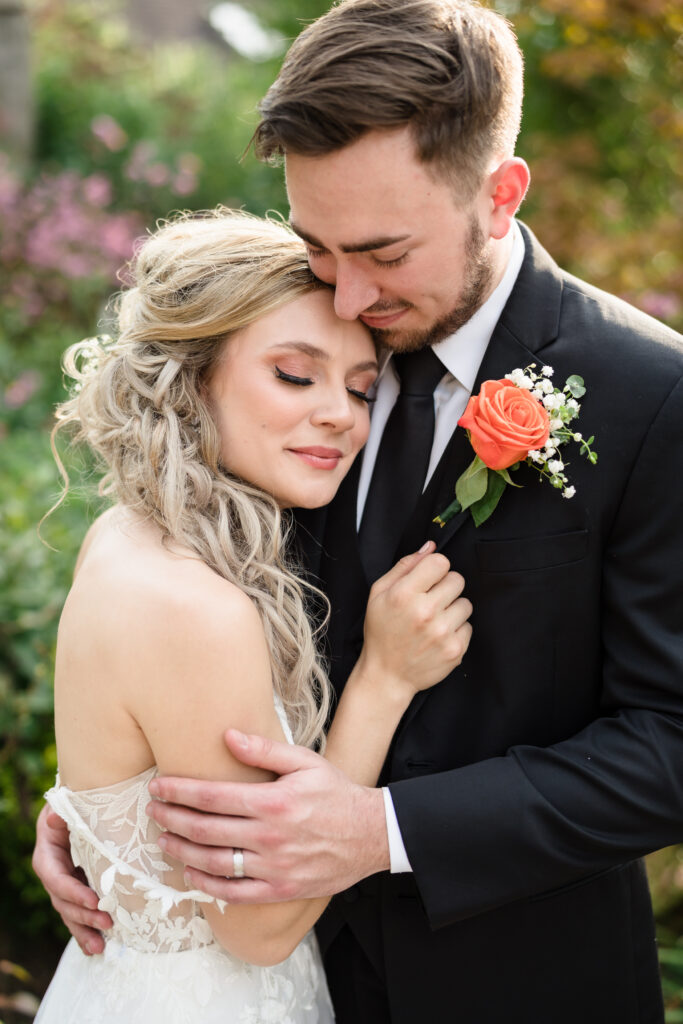
Professional Lenses
Another critical component for photographers is lens selection. As is the case with cameras, it’s possible to purchase a high-quality lens capable of taking beautiful images for only a few hundred dollars; however, most wedding photographers purchase expensive “professional” lenses costing several times more. Why?
To answer this question, we have to briefly explain the concept of aperture. To put it simply, each lens is assigned an aperture value that corresponds to the amount of light that lens lets in. Confusingly, the lower the aperture value, the more light the lens lets in. For example, a lens with an aperture value of 1.4 lets in FOUR TIMES more light than a lens with an aperture value of 2.8. The advantage here is the same as having a larger sensor in your camera: lenses that let in more light perform better in dimly-lit environments and allow the photographer to achieve better subject separation. That’s why many wedding photographers are willing to pay between $1,000 and $2,500 for a lens with a 1.2 or 1.4 aperture – it gives them creative control and allows them to achieve clean, beautiful images in the worst conditions.

When you combine the cost of camera bodies, lenses (most wedding photographers have at least 4 lenses), memory cards, flashes, hard drives, computers, camera bags, etc., it begins to make sense why wedding photography is such an expensive field. It’s common for individual photographers to carry $10,000 to $20,000 of equipment with them into a wedding. Photographers with more expensive equipment have to charge more for their services which helps to explain some of the price discrepancy.
Are Some Artistic Styles More Expensive Than Others?
Wedding photography is a form of art, and each photographer has their own unique style that they have refined over time. While art is subjective and there is no such thing as an objectively better style for wedding photography, there are certain styles that tend to be more expensive than others.
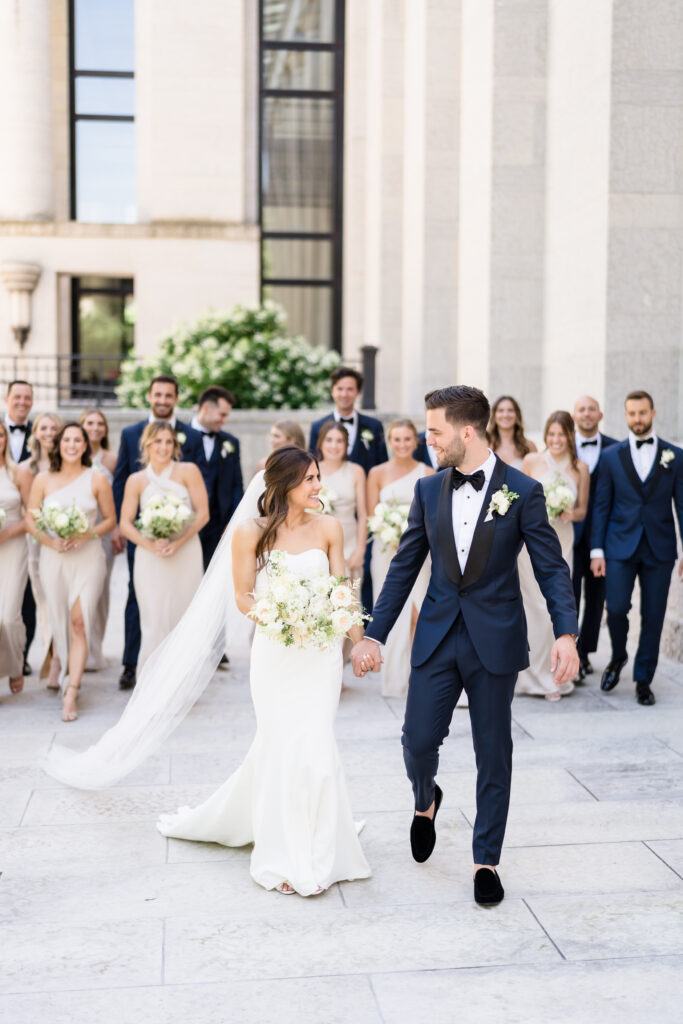
To begin, some photographers love the look and feel of images taken with a high degree of subject separation (shallow depth of field), and as we explored in the previous section, this requires more expensive equipment to achieve.
Other photographers set themselves apart with their mastery of various lighting techniques (natural light, on-camera flash, off-camera flash, etc.). Whereas a less skilled photographer might struggle to adapt to different lighting conditions, highly skilled wedding photographers can create beautiful images regardless of the color and quality of the ambient light. Not only does this require a high degree of skill, it also requires specialized lighting equipment which adds to the value of their service.

The Impact of Editing
Additionally, wedding photographers demonstrate their artistry through the editing process. Most high-end photographers edit each image individually, adjusting parameters like white balance, color, contrast, and tonality in while digitally removing distractions from key images, such as those that are selected for inclusion in an album. Here at Brad Gillespie Photography, I take this more detailed approach, as I want each image we deliver to be of the highest quality. In contrast, some photographers simply apply a preset to all images as a way to save time and thus decrease their costs. While this can often get images 80% of the way, the finishing touch that could set their imagery apart are missing. Worse yet, some photographers don’t edit their images at all and simply deliver photos to the client as they came out of the camera.
Another piece of the editing process that’s important to consider is consistency. Wedding galleries include images taken in different locations at different times of the day and under different lighting conditions, but it should be obvious to the viewer that they were taken by the same photographer and developed with the same artistic vision. If the formal portraits are light and airy, the candids should be light and airy as well. If the pictures earlier in the day are edited to have a warm, punchy tone to them, then the photos from the reception should have a similarly warm, punchy tone. This consistent look and feel is particularly important for those looking to purchase a wedding album since any variation will be especially obvious when images are placed side by side on the same page.
While this seems simple enough to achieve, it’s not as simple as you might think. The photographer has to constantly adapt to changing conditions, adjusting camera settings to maintain a similar exposure and feel to the images.

Additionally, when editing well over 1,000 images, it’s easy for the photographer to gradually change their editing style without even noticing. From one image to the next, the style might appear similar, but when comparing the 50th image to the 500th image, these gradual changes quickly become obvious. This ability to maintain a consistent vision, combined with the skill to execute the vision throughout the wedding day and in the editing process, is something that is refined over time. Those photographers who have mastered the process can charge more than others while those who struggle for consistency will have difficulty booking higher-end clientele, forcing them to reduce their prices.
In the end, wedding photography spans an incredibly broad price range, and a quality photographer exists for couples at all ends of the budget spectrum. By inspecting a photographer’s portfolio and looking for consistency, asking about their editing process and the gear that they use, and determining what is included in their photography packages, you can better understand the reasons behind the wide range of prices on the market and best determine whether you’re getting a good deal for the style of photography you desire.
I value taking the time to get to know each couple so that I can best tell the story of their love for each other in a manner that feels true to them. Get ready to fill your walls with memories that you will cherish for a lifetime!
You're in the right place.
and a wedding experience that is fun, personal, and tailored to your vision?
looking for Photos that are timeless and authentic
The Timeline Guide
Stress-Free Wedding Day
free guide: Tips for a
wedding day
the free guide
Explore the FREE GUIDE
While each and every wedding is unique, it's important to plan for and devote sufficient time to each part of the wedding day. In this guide, we will explore the parts of the day that are particularly relevant to wedding photography, providing guidance on how much time should be allotted to each.
enjoy your wedding
A FREE GUIDE TO HELP YOU
Stress-Free